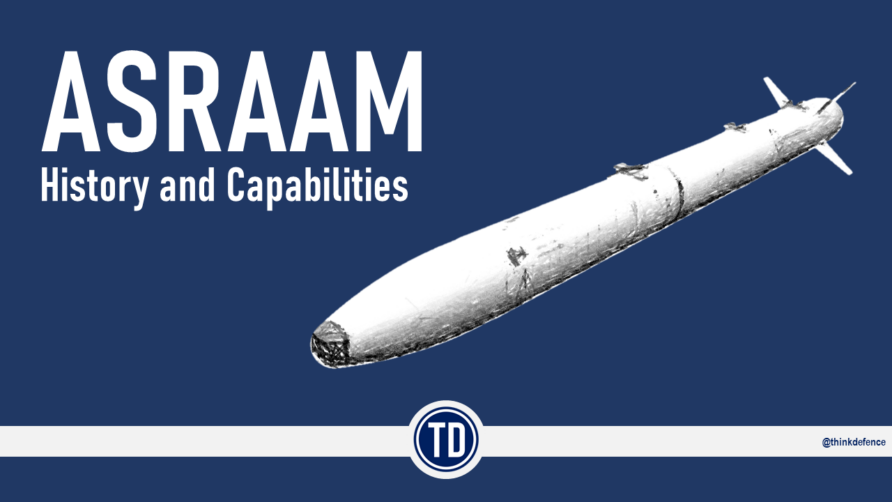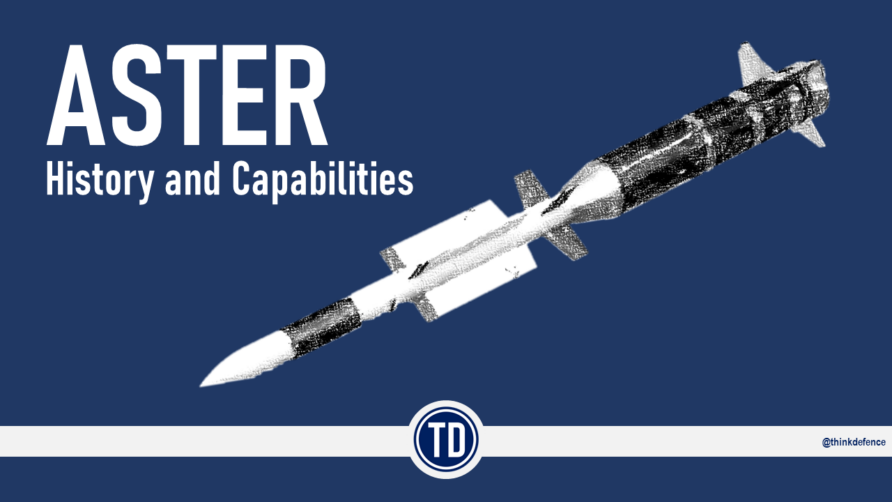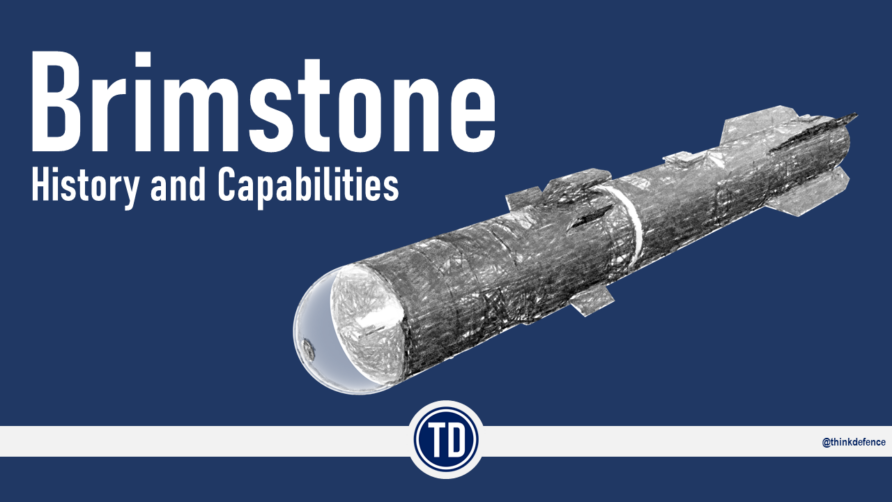NLAW is a lightweight, short-range anti-tank weapon designed to engage main battle tanks and other fighting vehicles up to a range of 600m.
The Next-Generation Light Ant-Tank Weapon (NLAW) is described by Saab as;
The Bofors NLAW (Next Generation Light Anti-tank Weapon) is the first ever single soldier missile system that rapidly knocks out any Main Battle Tank in just one shot by striking it from above. The true tank killer for light forces that operate dismounted in all environments including built-up areas.
It is currently in service with the British Army, Royal Marines and RAF Regiment.
NLAW (Next-Generation Light Anti-Tank Weapon) History
The history of NLAW starts with the weapon it was intended to replace, the LAW 80.
Light Anti-Armour Weapon (LAW) 80 was intended as a replacement for the Rocket 66 mm HEAT L1A1, more commonly known as the M72 LAW.
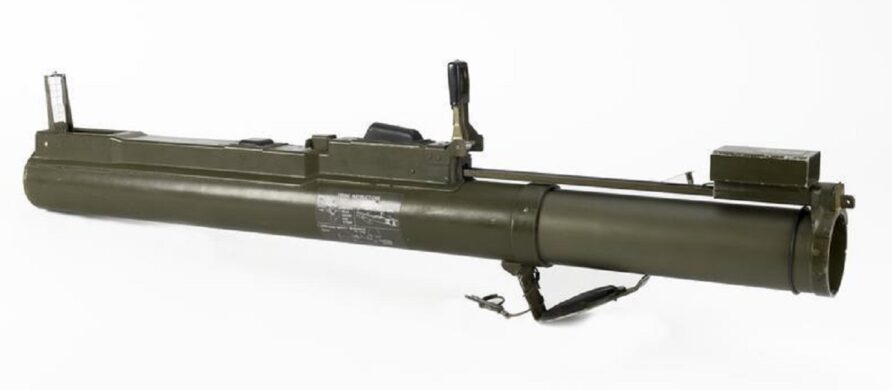
The L1A1 was considered increasingly obsolete against modern Soviet armour, primarily as a result of its fixed diameter, unlike RPG-type weapons, the launch tube diameter constrained the warhead diameter. For HEAT warheads, one of the principal means of increasing penetration is with a warhead of greater diameter.
Hunting Engineering began the development of a replacement for the L1A1 and 84 mm Carl Gustav in the late seventies. It still had an encapsulated rocket, and a disposable housing, but with an integral spotting rifle to exploit the larger rockets’ increased range over the 66 mm L1A1.
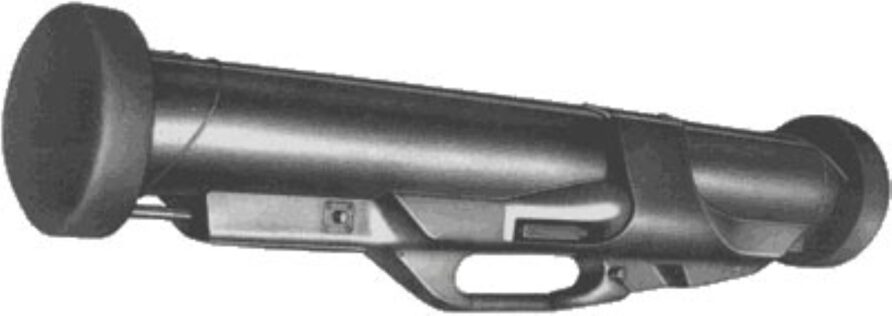
LAW-80 was designed with a 94 mm diameter warhead and included a spotting rifle and a five-round magazine that fired ammunition ballistically matched to the main round. The round was 9 mm in diameter and mounted in a modified 7.62 mm NATO case with a .22 Hornet blank in the base.
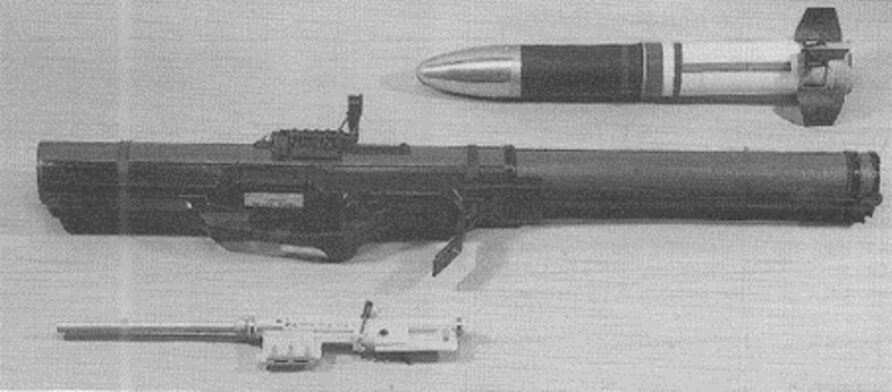
LAW-80 was generally referred to as LAW-94, regarding the warhead diameter.
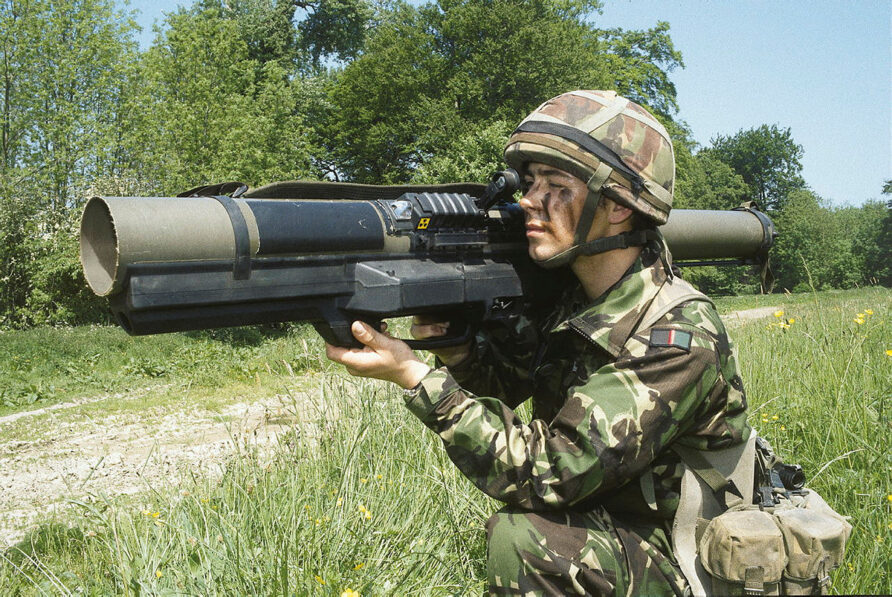
The effective range was reportedly 500m, although it would be relatively difficult to achieve a hit at this range against a moving target. If it did hit, though, the vehicle would likely be in trouble, the warhead could penetrate 700 mm RHA.
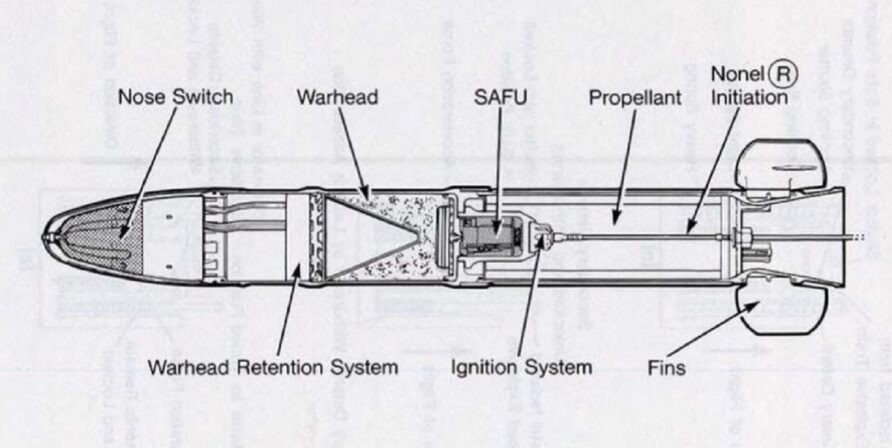
When carried, the missile was 1m long, this was extended to 1.5m in the ready-to-fire mode. The tubes were made from Kevlar-reinforced epoxy resin that used a filament winding process, and coated in polyurethane that was co-cured with the resin matrix.
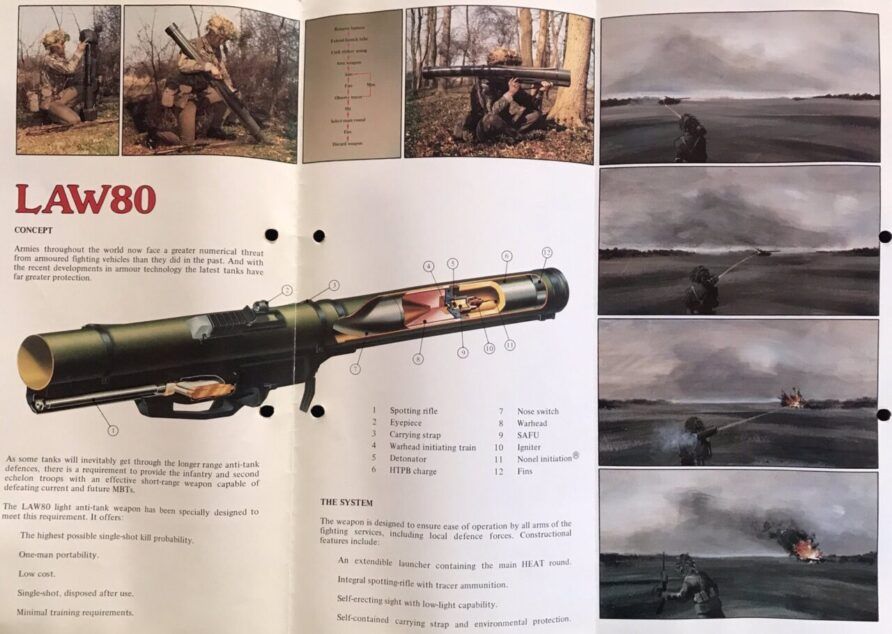
LAW-80 weighed 10 kg and had a rear danger area of 10-20m.
The soldier prepares the launcher by removing the protective end caps and extending the rear tube, which contains the rocket. He then places the weapon on his shoulder, takes aim through the small optical sight, and presses the trigger to fire the spotting rifle. The rifle is a self-loader and carries five rounds in its magazine so that up to five aiming shots can be fired. Once the soldier sees a shot strike the target he presses forward the change lever With his thumb and, maintaining the same point of aim, pressed the trigger to fire the locket. The rocket motor burns out before the rocket has left the launcher, thus ensuring that the backblast is confined by tube and directed well behind the firer.
LAW-80 could also be used as a command-detonated ‘off-route mine’ with a simple kit.
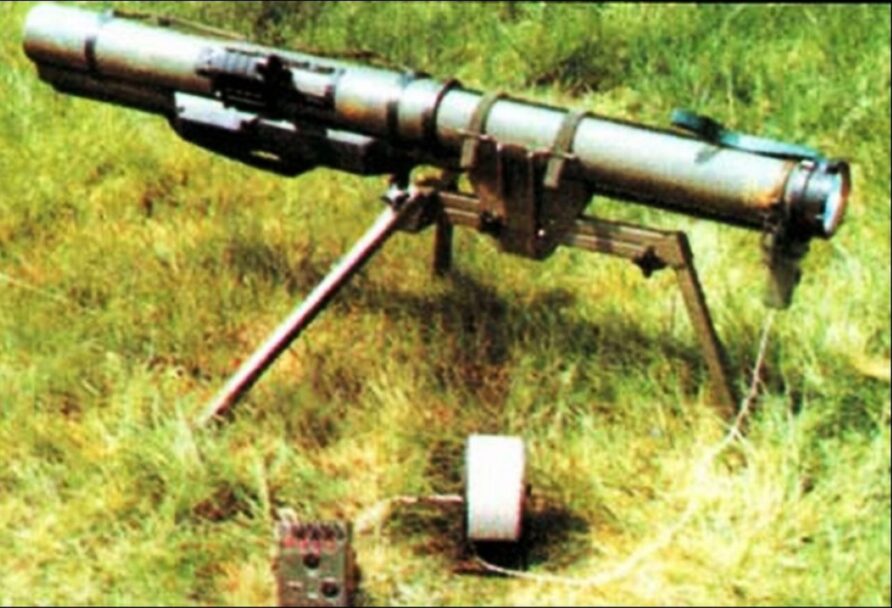
LAW-80 was last produced in 1993.
A more complex set of off-route mine systems were developed called Addermine, Addermine/Arges, and Adderlaze.
Addermine used a sensor wire, with the weapon firing in response to a vehicle crushing or breaking it.
Addermine/Arges used a clip-on sensor that could determine the optimum firing point for specific vehicles.
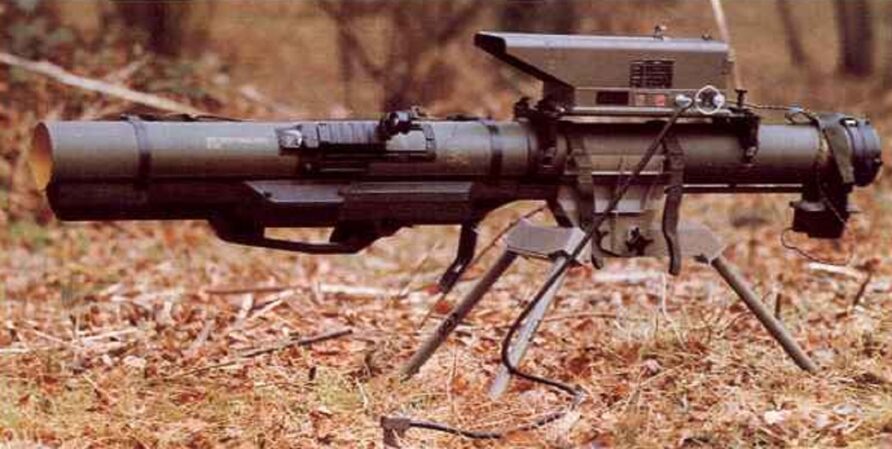
Adderlaze used a laser rangefinder and computing system that was claimed to enable targets to be engaged at up to 2,000m.
Between 1987 and 1991, the Defence Research Establishment (DRA) conducted a survey of systems that might potentially replace LAW-80. The outline requirement was that the system was to weigh no more than 10 kg, be able to penetrate the frontal armour of all known main battle tanks and be operable from inside buildings.
Operational analysis recognised that infantry would be unlikely to reload if they missed (this is what prompted the inclusion of the LAW-80 spotting rifle in comparison with the M-72 LAW and Carl Gustav) and so some form or guidance was envisaged.
DRA looked at two requirements, and several systems, including the Aérospatiale Eryx and Loral Aeronautics Predator. In parallel, DRA conducted a study with the UK industry under the Future Man Portable Missile System (FMPMS) programme. Two representative concepts emerged from these studies for a New Light Ant-Armour Weapon (NLAW)
NLAW-1 was a simple, short-range (<200m) unguided rocket that used an enclosed counter-mass system with a dual tandem warhead and Thorn EMI lase stand-off fuze.
NLAW-4 was a larger weapon, with a maximum range of 600m and an automatic command to line of sight (ACLOS) guidance system. NLAW-4 used a top attack warhead with a pre-cursor charge that was able to counter the increasingly common explosive reactive armour being fielded on Russian tanks. It also had a very fast-acting Royal Ordnance rocket motor to provide a maximum flight time of 4 seconds.
The proof of concept NLAW-4 ACLOS system was developed by British Aerospace and the DRA. DRA also funded the development of a GEC Marconi Avionics lightweight thermal sight.
These initial concept studies eventually gave way to a single requirement, Staff Requirement (Land) 7098, Next-Generation Light Anti-Armour Weapon (NLAW).
An invitation to tender was issued by the MoD in September 1999.
The requirement was defined as;
Next Generation Light Anti-Armour Weapon’s (NLAW) primary use will be to defeat armour in close battle. Its secondary use will be to attack defended positions such as bunkers. Recognising the potential for warfare in urban areas, it must be capable of being fired from within buildings. NLAW will be used by the infantry in conjunction with medium range weapons (up to 2000-3000m), but will be the only individual anti-armour weapon for other arms and services. Operational analysis has indicated that, as a fixed point defence weapon, significant numbers of NLAW will be required in order to ensure there is sufficient coverage of the battlefield and rear areas.
Two initial Project Definition studies were awarded to Matra BAe Dynamics and Celsius (Sweden) and in January 2001, two bids were received for the Demonstration, Manufacture and Support phases.
Matra BAE Dynamics entered the Kestrel.
Kestrel was an enhanced version of the Lockheed Martin FGM-172 Predator Short Range Anti-Tank Missile that was intended to enter service with the US Marine Corps.
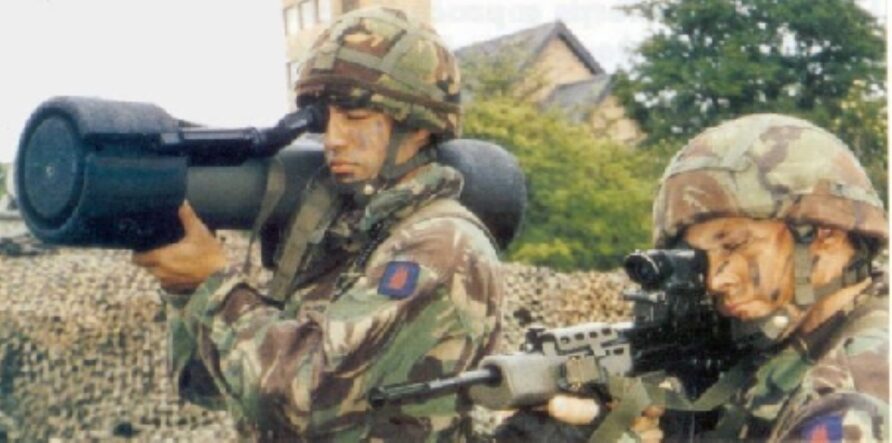
The main difference between the Kestrel variant of Predator was it featured a direct attack mode to defeat bunkers and lighter vehicles.
And Celsius, the MBT-LAW
Saab Bofors Dynamics Ltd (SBD) eventually absorbed the bid.
An October 2001 Written Answer described the state of the competition
I am replying to your questions to the Secretary of State for Defence on the British Army’s next generation anti-armour weapon programme. The programme to which you refer is the Next Generation Light anti-Armour Weapon, known as NLAW. These matters fall within my area of responsibility as Chief of Defence Procurement and Chief Executive of the Defence Procurement Agency.
The companies, which have submitted bids to meet this requirement, are SAAB Bofors Dynamics AB and Matra BAe Dynamics (UK) Ltd. Neither are wholly UK owned companies, however, Matra BAe Dynamics (UK) Ltd. is a UK registered company jointly owned by BAE Systems and EADs. BAE Systems also have a shareholding in SAAB Bofors Dynamics parent company.
The final cost of the NLAW contract is subject to negotiation, but it is expected to be in the order of £400m. The tender closing date was 21 September 2001 and it is anticipated that the contract will be let next year. The contract could run for up to 25 years, if all the in-service support options are selected, but it is expected that the Development and Production elements will be complete by 2009.
The Matra BAE Dynamics bid was eventually absorbed by MBDA, with test firings of both conducted throughout the year.
An MoU was signed with Sweden in June 2002, the same time Saab Bofors Dynamics (Celsius) was announced as the winner.
Saab Bofors Dynamics Ltd (SBD) was selected as the preferred bidder for the armed forces Next Generation Light Anti-Armour Weapons (NLAW) following a competition. Selection of the Saab weapon, known as MBT-LAW, presents an excellent opportunity for United Kingdom industry and is expected to create or sustain more than 500 jobs across the United Kingdom. The weapon also has significant export potential.
The programme is being undertaken in collaboration with the Kingdom of Sweden, enhancing our ties with an EU partner. A memorandum of understanding between our two Governments for the development and production of MBT-LAW is due to be signed shortly.
This competition has been an excellent example of smart acquisition and demonstrates how an effective capability can be achieved at affordable cost
Assessment Phase costs were £18 million and the Demonstration and Manufacture contract was £419 million.
Team MBT-LAW consisted of;
- Thales Air Defence; assembly
- BAE Systems Avionics; inertial measurement unit
- NP Aerospace; plastic and composite mouldings
- FR-HiTemp; control fins and actuators
- Raytheon Systems; electronics assemblies
- Skeldings; special purpose springs
- Thales Missile Electronics; proximity fuze
- Others included MetalWeb, BAE Systems RO Defence, EPS Logistics Technology, Express Engineering, Portsmouth Aviation, ICI Nobel Enterprises, Leafield Engineering.
The in-service date was originally intended to be 2006, but reliability problems with Saab Bofors Dynamics supplied sub-systems (subsequent system qualification) delayed this to 2009.
In 2004, the MoD purchased 2,500 AT-4 systems to bridge the gap, these being designated L2A1 Interim Light Anti-Armour Weapon (I-LAW)
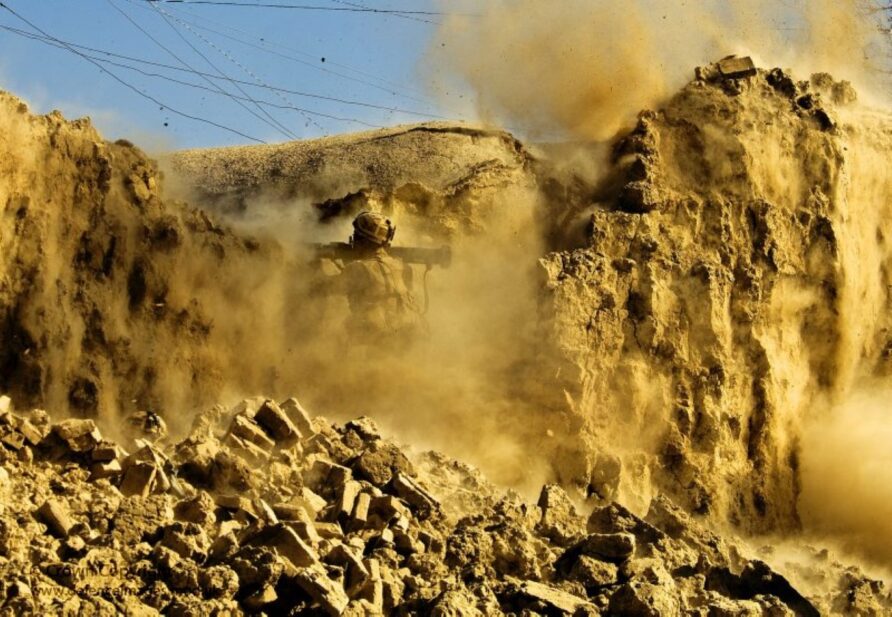
Thales in Belfast assembled the missiles and deliveries began in 2009, the same year it came into service.
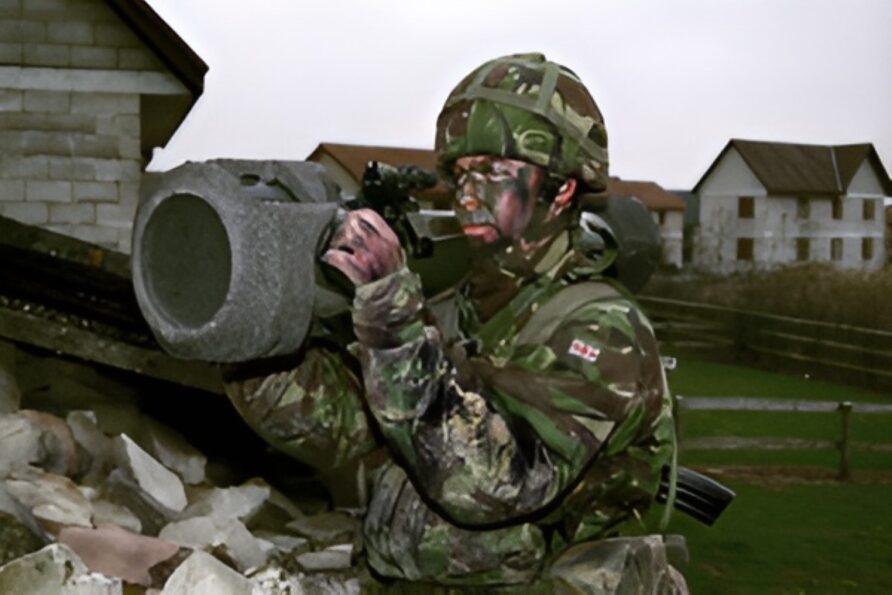
The contracted quantity of missiles was, oddly, 14,002.
In 2015, Saab released details of a software change that could easily extend the effective range;
Using the vast amount of test data from production and live firings, Saab has been able to optimise the guidance system of the NLAW weapon system by fine-tuning its Predicted Line of Sight [PLOS] software to extend the effective range beyond the 600 m to which it is currently designed. We have demonstrated through successful firings that we are able to effectively engage targets at 800 m and up against stationary targets. That’s fairly significant. We do not yet have the numbers for moving targets
In addition to the UK, NLAW is also in service with Finland, Sweden, and Luxembourg.
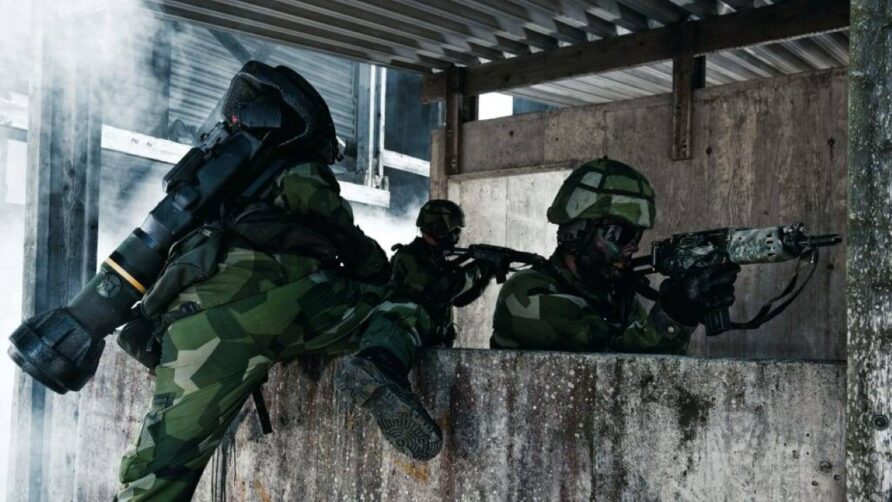
In response to the Russian invasion of Ukraine in early 2022, the UK provided training and a substantial quantity of NLAW to Ukraine, where they proved to be extremely effective, arguably of strategic importance during the early months.
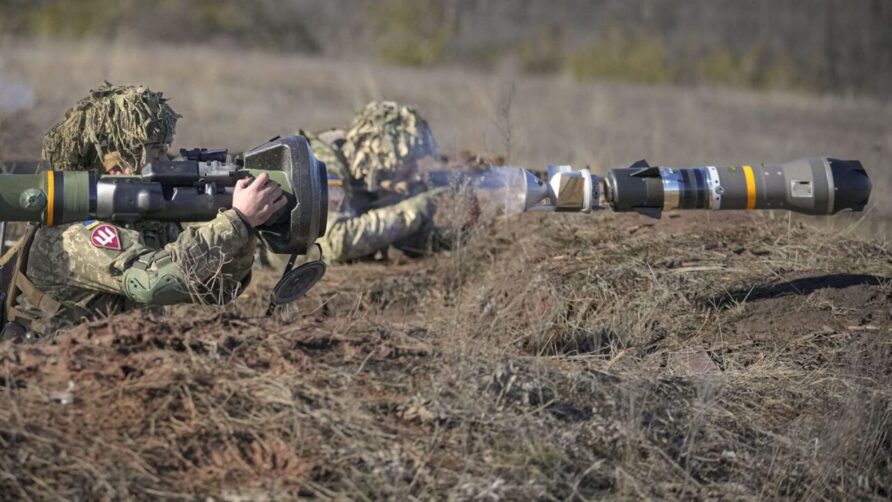
NLAW entered popular culture, with reports of Ukrainian operators saying ‘God Save the Queen’ after each shot, and of course, Saint NLAW.

As of July 2022, the quantities and types included
I am pleased to provide the House with a further update on equipment that the UK is providing to the Armed Forces of Ukraine. The UK is proud to lead the way in providing military assistance to Ukraine. The Prime Minister announced at the NATO Leaders’ Summit on 30 June that a further £1bn of military support to Ukraine will be provided. This brings the UK’s total military support to Ukraine to £2.3bn.
We have already supplied Ukraine with a significant quantity of equipment, including:
More than 6,900 anti-tank missiles (including more than 5,000 NLAW, as well as Javelin, Brimstone, and other anti-tank weapons)
Multiple Launch Rocket Systems
120 Armoured Fighting Vehicles
6 Stormer vehicles fitted with Starstreak launchers as well as hundreds of Starstreak missiles
Maritime Brimstone
More than 16,000 rounds of artillery ammunition, as well as anti-structure munitions and 4.5 tonnes of plastic explosive
Communications equipment
Electronic warfare equipment
More than 82,000 helmets, 8,450 sets of body armour, medical supplies and more than 5,000 night-vision devices.
Our support for the Armed Forces of Ukraine (AFU) will continue. In the next few weeks, we will be giving the AFU equipment, including:More than 20 M109 155mm self-propelled guns
36 L119 105mm artillery guns and ammunition
More than 50,000 rounds of ammunition for Ukraine’s soviet era artillery
At least 1,600 more anti-tank weapons
Unmanned aerial systems (including 100s loitering aerial munitions)
Counter-battery radar systems
Medical equipment
Future planned military support will also include more sophisticated defence systems across a range of capabilities.On 25 April I also committed to placing an update on international donations of military equipment to Ukraine in the House Library. I include below two summaries: one of UK donations; and a second of combined international donations. These summaries only contain quantities known to the UK where other countries are content for this information to be released. We do not necessarily see or know the totality of assistance provided by all donors. The delivery and provision of aid is dynamic and fast moving so the numbers and types of capability included are likely to change quickly.
The scale and range of equipment we are providing, at pace, demonstrates how we are delivering on our commitment to provide Ukraine with support to resist and defeat the Russian invasion. We will continue to do so until Ukraine’s sovereignty is restored.
The MoD reportedly placed additional contracts with Thales for NLAW stock replenishment in November 2022.
A later series of releases from the MoD clarified that it had supplied 6,900 NLAW and 200 Javelin to Ukraine.

In December 2022, the MoD confirmed a replenishment order for NLAW
Thousands of new anti-tank weapons will be assembled in Northern Ireland and delivered to the British Army, Defence Secretary Ben Wallace announced today (7 December).
A £229 million deal has been agreed with Swedish manufacturer Saab for Next Generation Light Anti-Tank Weapon (NLAW) systems, which are assembled at Thales’ facility in Belfast, Northern Ireland.
The UK has provided thousands of NLAWs to Ukraine to support the defence of their nation following Russia’s unprovoked and illegal invasion. With NLAW, a single soldier can take out a heavily protected modern main battle tank from 20 to 800 metres away.
Click here to read more
The order was later confirmed to be completed by 2026, with first deliveries in 2023.
In August 2023, the MoD awarded a support contract to Saab for both NLAW and the Carl Gustav systems.
In a written response to the Defence Select Committee report, ‘Ready for War’, in April 2024, the MoD stated
To date investments include support to deliver a large purchase of 155mm munitions, building storm shadow stockpiles, supply chain mapping, wargaming, enhancements to a range of critical infrastructure, and medical stockpiles.
In addition to these uplifts, we have placed almost £1Bn in contracts to replenish UK stocks of equipment and munitions already granted to Ukraine. Contracts have been placed to replenish UK stockpiles include Next Generation Light Anti-Tank Weapons; Starstreak High Velocity Missiles; Lightweight Multirole Missiles; Javelin missiles; Brimstone missiles; 155mm artillery rounds; and 5.56mm rifle rounds
It was reported that France had selected NLAW to replace the Eryx until its longer-term successor had been developed.
Before reading on, would you mind if I brought this to your attention?
Think Defence is a hobby, a serious hobby, but a hobby nonetheless.
I want to avoid charging for content, but hosting fees, software subscriptions and other services add up, so to help me keep the show on the road, I ask that you support the site in any way you can. It is hugely appreciated.
Advertising
You might see Google adverts depending on where you are on the site, please click one if it interests you. I know they can be annoying, but they are the one thing that returns the most.
Make a Donation
Donations can be made at a third-party site called Ko_fi.

Think Defence Merch
Everything from a Brimstone sticker to a Bailey Bridge duvet cover, pop over to the Think Defence Merchandise Store at Red Bubble.
Some might be marked as ‘mature content’ because it is a firearm!
Affiliate Links
Amazon and the occasional product link might appear in the content, you know the drill, I get a small cut if you go on to make a purchase
NLAW (Next Generation Light Ant-Tank Weapon) Capabilities
NLAW consists (broadly) of three main components
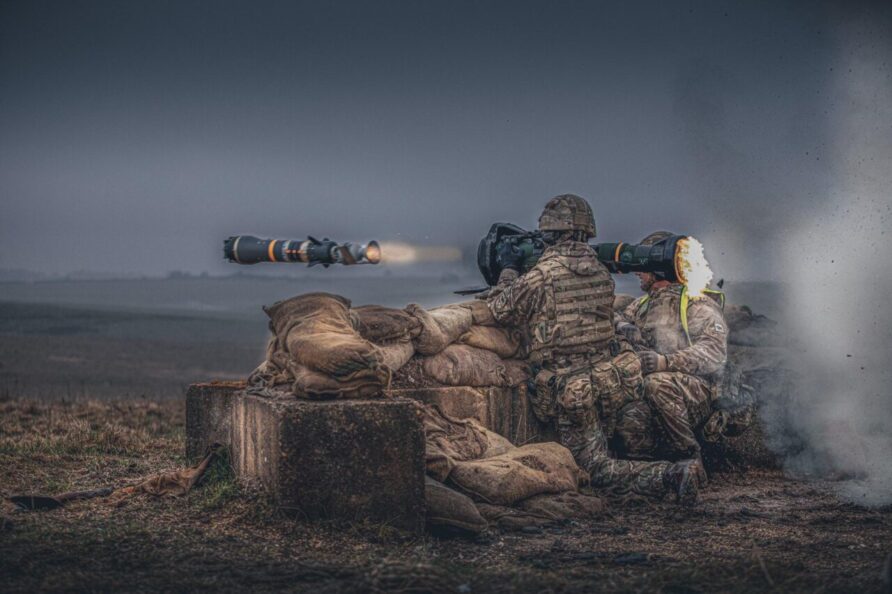
NLAW Container
Manufactured by EPS Logistics in South East England
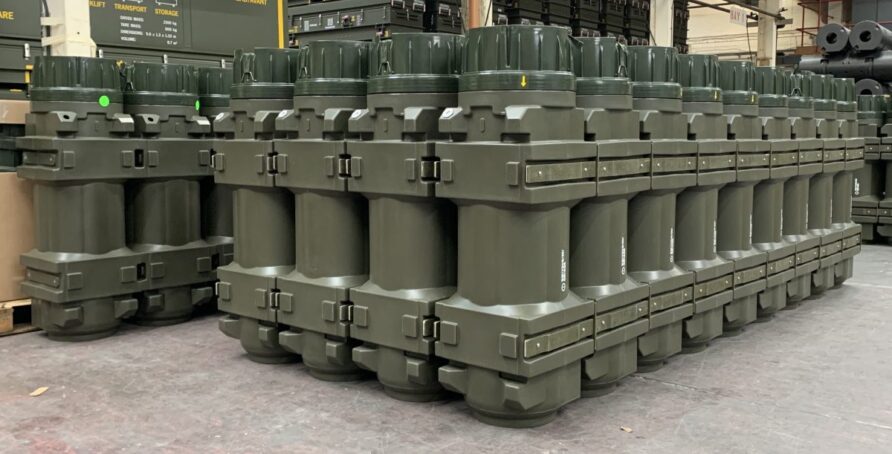
The NLAW container comprises a moulded plastic outer that can be clipped together for ease of handling and palletisation.
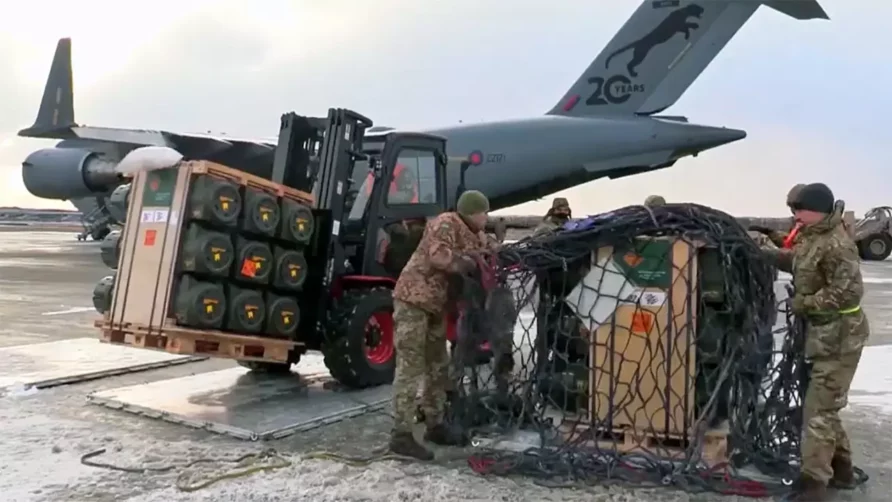
The end cap is unscrewed, revealing a pull tab on a polystyrene inner, which is pulled out and disassembled, revealing the NLAW
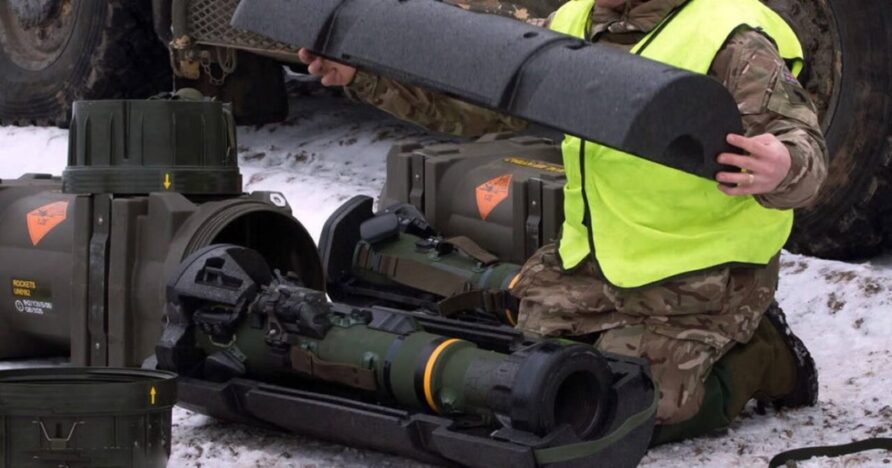
This arrangement contributes to a 20-year shelf life for NLAW.

There is even a handy video online…
Enterprising Ukrainians have utilised these containers for everything from a field shower to a mobile chicken coop and even a set of Bluetooth speakers.
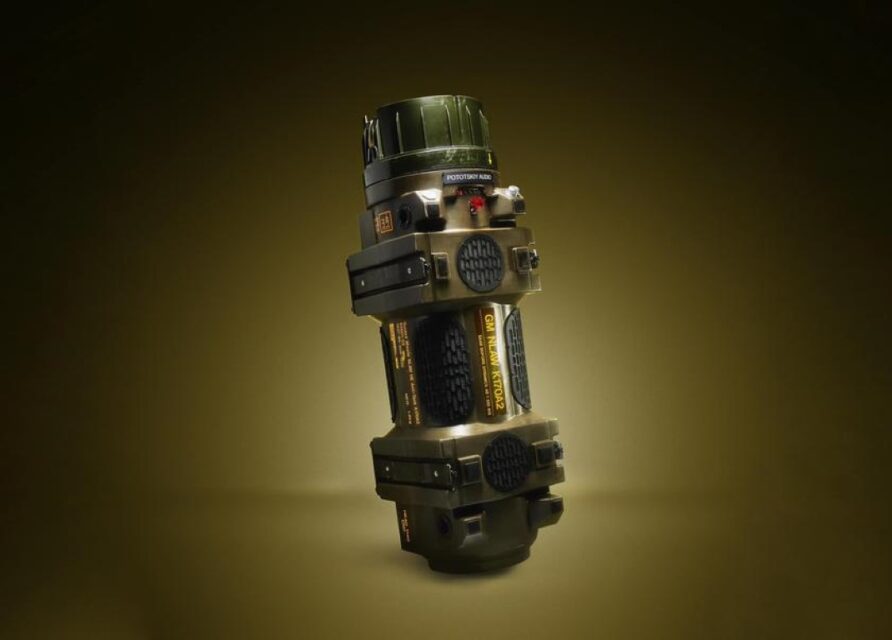
Launch Assembly
Out of the box, NLAW is a single ready to use unit.
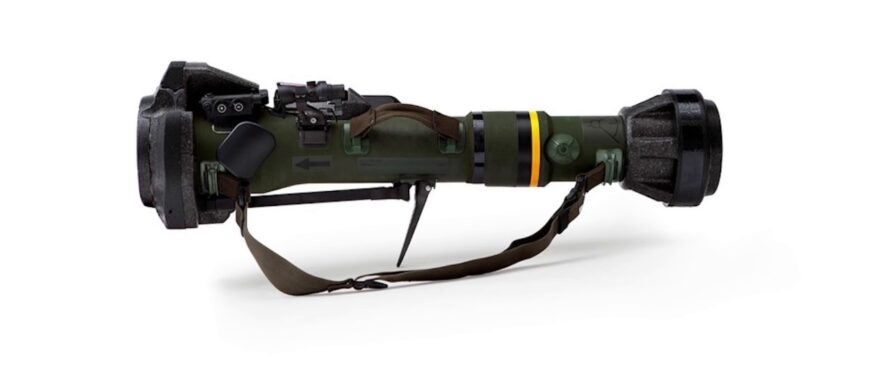
NLAW is a maintenance-free and disposable system, although the Trijicon Compact ACOG 2.5×20 sight can be detached and reused if required.
The guidance system uses Predicted Line of Sight (PLOS), technically, it is not a missile as it is not guided to the target. The firer activates the system and tracks the target for 2 to 3 seconds before firing, the guidance system then calculates the predicted flight path to ensure a hit, it is a fire-and-forget device.
The firer can select overfly top attack (OTA), for use against main battle tanks and armoured vehicles, or direct attack (DA) against soft-skinned vehicles and other targets. In OTA mode, the guidance algorithm optimises the approach for an elevated flight path with a proximity fuze and in direct attack mode, the sensor system that maintains height is simply disconnected, and the missile is impact fuzed.
NLAW has a soft launch system that allows it to be fired from cover, inside buildings etc.
It can also be fired without guidance prediction if the situation requires it.
Rocket
The rocket is completely IM-compliant, and has an effective range of between 20m and 600m.
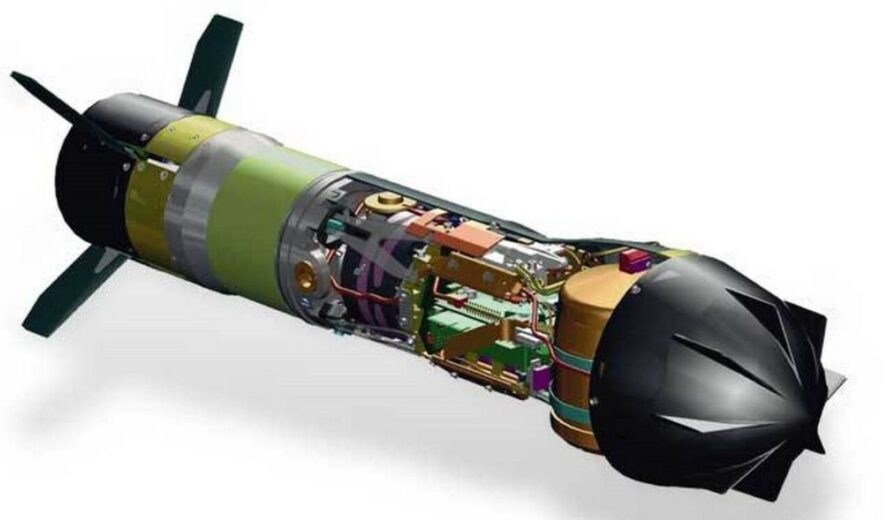
The 120g launch motor boosts the rocket clear of the firing point and falls away soon after launch. The sustain motor initiates a safe distance from the firing point, containing 750g of propellant.
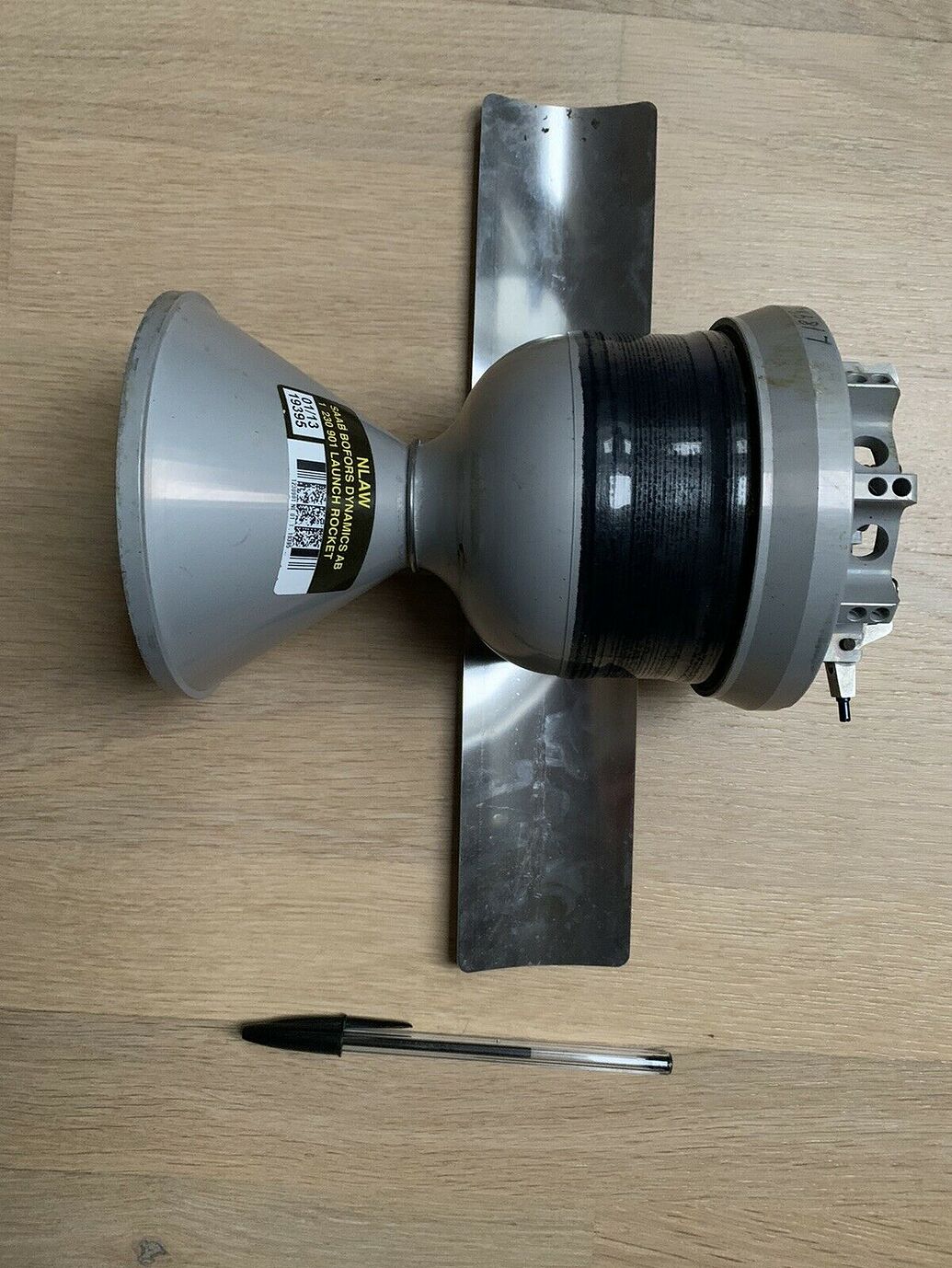
The NLAW warhead contains 850g of IM compliant PBX explosive and is 102 mm in diameter, angled down at 90 degrees.
Change Status
| Change Date | Change Record |
| 21/05/2016 | initial issue |
| 29/07/2021 | Update and format refresh |
| 20/11/2022 | Updated with Ukraine details |
| 25/10/2023 | Updated with support contract |
| 05/05/2024 | Minor updates |
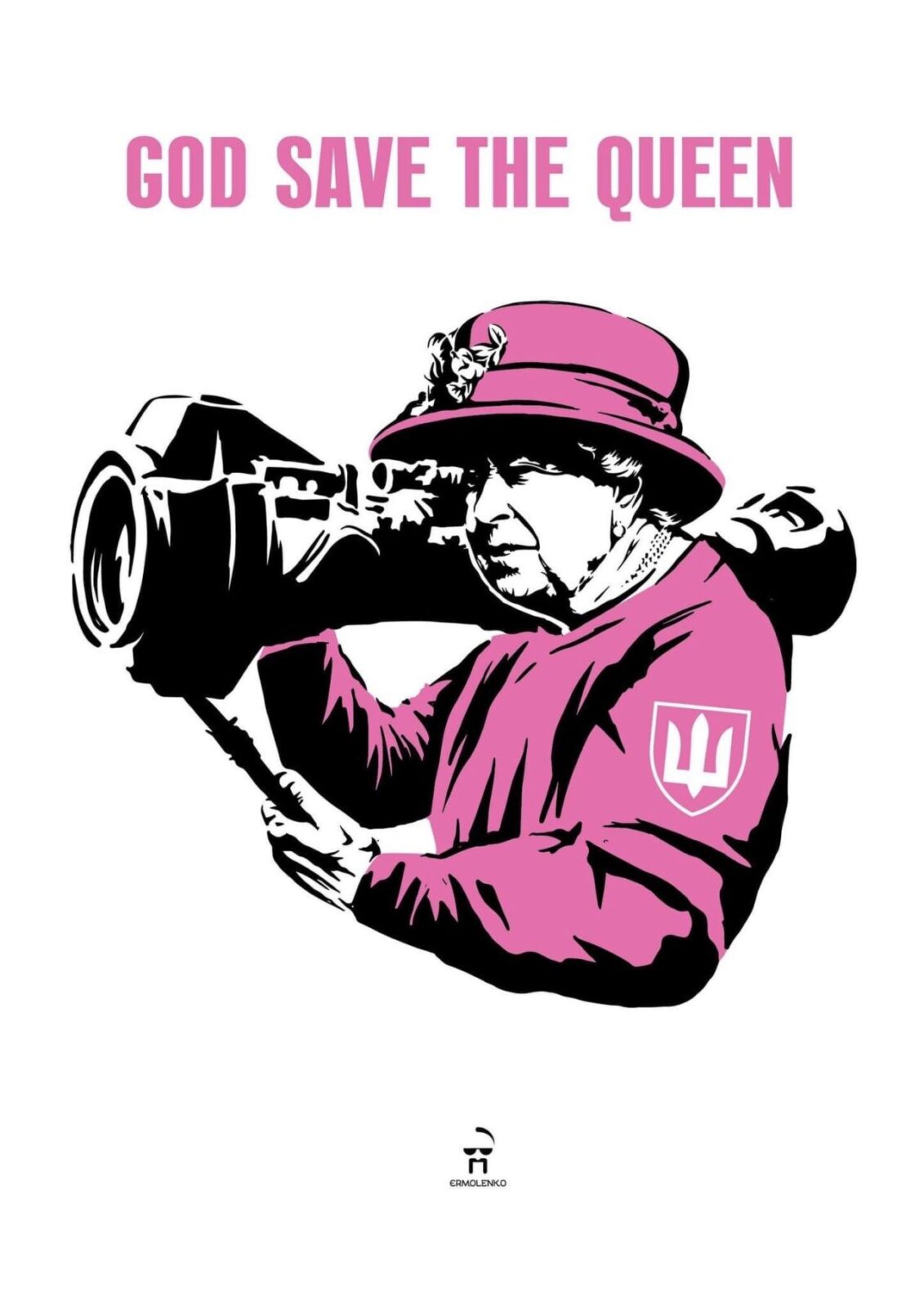
Discover more from Think Defence
Subscribe to get the latest posts sent to your email.


